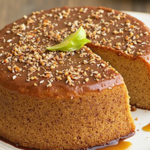Understanding the nutritional value of chicken breast is essential for maintaining a balanced and healthy diet. This lean protein offers numerous health benefits when included in your meals the right way.
Why do so many people prefer chicken breast? It’s because of its impressive chicken breast nutrition and how simple it is to prepare. With high protein content and low fat, it’s ideal for weight loss and muscle building goals.
Table of Contents
Key Takeaways
- Chicken breast is an excellent source of lean protein.
- It is rich in essential nutrients and low in fat.
- Incorporating chicken breast into your diet can support weight management.
- Its high protein content makes it ideal for muscle repair and growth.
- A balanced diet that includes chicken breast can contribute to overall health and well-being.
Understanding Chicken Breast Nutrition
To make the most of your diet, knowing what’s in chicken breast is key. It’s packed with protein and low in fat. This makes it a favorite among those who work out and care about their health.
Macronutrient Breakdown: Protein, Fat, and Carbs
Chicken breast is a top-notch protein source, with about 31 grams in every 3-ounce serving. It has only 3.6 grams of fat and almost no carbs. This makes it perfect for boosting protein without adding too many calories.
| Nutrient | Amount per 3 oz serving |
| Protein | 31 grams |
| Fat | 3.6 grams |
| Carbohydrates | 0 grams |
Essential Vitamins and Minerals in Chicken Breast
Chicken breast is not just high in protein. It’s also full of important vitamins and minerals. It’s a good source of niacin, vitamin B6, and phosphorus. These help with energy, nerve function, and keeping bones and teeth strong.
| Nutrient | Amount per 3 oz serving |
| Niacin | 12.3 mg |
| Vitamin B6 | 0.3 mg |
| Phosphorus | 200 mg |
Knowing what’s in chicken breast helps you make better diet choices. It ensures you get its many health benefits.
Health Benefits of Chicken Breast
Chicken breast is great for those looking to get healthier. It’s full of protein, has little fat, and is packed with vitamins and minerals. Adding chicken breast to your diet can be a smart move.
Weight Management and Muscle Building
Chicken breast is an excellent choice for both weight management and muscle building. Its high protein content requires more energy to digest, which can boost your metabolism and support weight loss efforts.
In addition, the lean protein in chicken breast contributes significantly to muscle repair and growth. That’s why Chicken Breast Nutrition is highly valued by fitness enthusiasts looking to improve performance and maintain a healthy lifestyle.
Heart Health and Cholesterol Management
Eating chicken breast can also be good for your heart health. It’s low in bad fats, which can help keep your cholesterol levels in check. This can lower your risk of heart disease.
Chicken breast also has niacin, a vitamin that can improve your cholesterol levels.
Immune System Support and Recovery
Chicken Breast Nutrition is a good source of selenium, a mineral important for your immune system. It helps protect cells and keeps your immune system strong. This is especially helpful when you’re recovering from illness or injury.
| Benefit | Description |
| Weight Management | High protein content aids in weight loss and muscle building. |
| Heart Health | Low in saturated fats, supporting heart health and cholesterol management. |
| Immune System Support | Rich in selenium, supporting immune function and recovery. |
How to Compare Chicken Breast to Other Protein Sources
To improve your diet, it’s key to compare chicken breast with other proteins. This helps you see the good and bad of each choice.
Chicken Breast vs. Chicken Thigh Nutrition
Chicken breast and thigh are both favorites, but they differ in nutrition. Knowing these differences helps you pick the right one for you.
Calorie and Fat Differences
Chicken breast is leaner than thigh. A 3-ounce cooked chicken breast has 110 calories and 3 grams of fat. Chicken thigh has about 140 calories and 6 grams of fat in the same size.
Protein Content Comparison
Both are protein-rich, but breast has more. A 3-ounce chicken breast has 26 grams of protein. Chicken thigh has 19 grams in the same size.
Chicken Breast Nutrition vs. Other Animal and Plant Proteins
Looking at chicken breast against other proteins, animal and plant, gives a full view of its value.
| Protein Source | Protein Content (g) | Calories | Fat Content (g) |
| Chicken Breast | 26 | 110 | 3 |
| Salmon | 20 | 180 | 10 |
| Black Beans | 15 | 225 | 1 |
| Turkey Breast | 24 | 110 | 1 |
The table shows chicken breast is high in protein and low in calories and fat. But, other foods like salmon have unique benefits, like omega-3s.
Step-by-Step Guide to Selecting Quality Chicken Breast Nutrition
Choosing the right chicken breast can seem hard, but with some tips, you can do it well. Look for freshness and quality when picking chicken. Freshness is key.
Identifying Fresh Chicken Breast
Look for a pinkish-white color and a firm texture in fresh chicken breast. It should smell mild. Stay away from chicken that looks slimy or smells strong.
Organic, Free-Range, and Conventional Options
You can choose from organic, free-range, or conventional chicken breast. Knowing the differences helps you decide better. Here’s a quick guide:
| Characteristics | Organic | Free-Range | Conventional |
| Feed | Organic feed, no GMOs | Conventional feed, access to outdoors | Conventional feed, may include antibiotics |
| Living Conditions | Access to outdoors, more space | Access to outdoors, may be crowded | Limited space, no access to outdoors |
| Antibiotics | No antibiotics | May include antibiotics | May include antibiotics |
Storage Tips to Preserve Nutritional Value
To keep chicken breast nutritious, store it right. Keep it cold, below 40°F (4°C), and use it within a couple of days. For longer storage, freeze it in airtight containers.
Best Ways to Cook Chicken Breast Nutrition for Maximum Nutrition
The way you cook chicken breast can greatly affect its nutritional value. It’s important to pick the right cooking method to keep it nutritious.
Dry Heat Methods: Grilling, Baking, and Air Frying
Dry heat methods cook Chicken Breast Nutritiont without adding extra fat. Grilling gives a crispy outside and a juicy inside. Baking cooks evenly and healthily. Air frying uses little oil, making it a better choice than deep-frying.
Moist Heat Methods: Poaching and Steaming
Moist heat methods keep chicken breast moist and full of nutrients. Poaching cooks the chicken in liquid at a low temperature, keeping it tender. Steaming cooks the chicken in steam, helping retain nutrients.
Avoiding Common Cooking Mistakes
Overcooking can make Chicken Breast Nutrition dry and less nutritious. Temperature control is key. Use a thermometer to ensure the chicken is cooked to a safe internal temperature.
Temperature Control Tips
Always use a meat thermometer to check the chicken’s internal temperature reaches 165°F (74°C).
Preventing Nutrient Loss
Cooking at high temperatures for too long can cause nutrient loss. Keep an eye on cooking time and temperature.
| Cooking Method | Nutritional Impact |
| Grilling | Retains nutrients, adds smoky flavor |
| Baking | Even cooking, retains moisture |
| Air Frying | Less oil used, crispy exterior |
Healthy Chicken Breast Recipes for Every Diet
Chicken Breast Nutrition recipes are a tasty and healthy choice for better health. They are packed with protein and can be cooked in many ways. This makes chicken breast a favorite for those who care about their health.
Fitness-Friendly High Protein Recipes
Looking to eat more protein? Try these high protein chicken recipes. You can make Chicken Breast Nutrition with quinoa and broccoli, or stuff it with spinach and feta cheese.
- Grilled chicken breast with roasted vegetables
- Chicken breast salad with avocado and nuts
- Chicken breast stir-fry with brown rice
Low-Calorie Chicken Breast Meals
Chicken Breast Nutrition is great for those watching their calories. Make meals like poached chicken breast with steamed veggies or a chicken breast salad with low-fat dressing.
Tips for low-calorie cooking:
- Use herbs and spices for flavor instead of oil
- Opt for baking or grilling instead of frying
- Choose low-fat dairy products or alternatives
Quick and Nutritious Weeknight Chicken Dishes
Even on busy weeknights, you can still eat healthy. Make quick meals like chicken breast fajitas or chicken breast and vegetable skewers.
Some ideas for quick meals:
- Chicken breast wraps with mixed greens
- Chicken breast and quinoa bowls
- Chicken breast soup with vegetables
Conclusion: Making Chicken Breast a Healthy Part of Your Diet
Adding chicken breast to your meals can greatly improve your health. It’s packed with protein, has low fat, and is full of vitamins and minerals. Knowing the chicken breast nutrition and benefits of chicken breast helps you make better food choices.
Chicken breast is great for weight management, muscle building, or just keeping your diet balanced. Choose high-quality chicken, cook it right, and try different recipes. This way, you can enjoy all the good things chicken breast offers. Make it a regular in your kitchen and see how it boosts your health.
FAQ
What are the nutritional benefits of chicken breast?
Chicken breast is packed with protein, vitamins, and minerals. It’s full of niacin, vitamin B6, and phosphorus. This makes it a great choice for a healthy diet.
How does chicken breast compare to chicken thigh in terms of nutrition?
Chicken breast has less fat and fewer calories than chicken thigh. Both are good for protein. But chicken breast is leaner.
What are the best ways to cook chicken breast to preserve its nutritional value?
Grilling, baking, poaching, and steaming are healthy cooking methods. They keep the protein and vitamins in while adding little fat.
Can chicken breast help with weight management?
Yes, chicken breast can help with weight management. Its high protein content makes you feel full longer and supports muscle.
Is organic chicken breast more nutritious than conventional chicken breast?
Organic chicken breast might have fewer antibiotics and pesticides. But the nutritional differences are small. Both can be healthy choices.
How can I ensure I’m buying fresh chicken breast?
Choose chicken breast that’s pink, firm, and has no bad smells. Check the expiration date and packaging for damage.
What are some healthy recipe ideas using chicken breast?
Try grilled chicken salads, chicken breast stir-fries, or baked chicken with herbs. These are all tasty and healthy.
How does cooking method affect the nutritional value of chicken breast?
Frying adds extra calories and fat. Grilling or steaming keeps more nutrients. Avoid overcooking to prevent losing nutrients.




